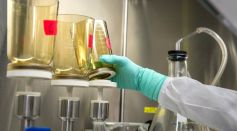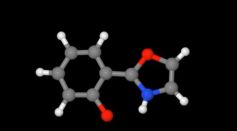Tags: Chemical reaction
How Does Water Put Out Fire? Exploring the Chemical Reaction in Extinguishing Flames

Chemical Reaction Using Cyanide, Ammonia and Carbon Dioxide Yields Amino Acids Maybe the Origin of Life

Platinum Catalysis in Room Temperature: Researchers Explain What Happens to Catalytic Atom Particles During Chemical Reaction

University of Illinois Used Zeolite Pores to Develop Water Molecules and Its Fluidity as Catalyst for Faster Chemical Reactions

Researchers Discover New AIEE Aromatic Molecule, Promises Applications in Sensing and Medicine
Liquid Metal Can Now Be Controlled Between Reflective and Scattering States
Researchers Report a Mysterious Organic Material That Catalyzes and Reduces Chemical Waste

Indian Chemist Reveals New Inkling to How Life Began on Earth
4-in-1 Catalyst Developed Using Silver-Palladium Nanoparticles: It's Eco-Friendly & Can Perform 4 Chemical Reactions
Ophthalmology Breakthrough: Newly Discovered Chemical Reaction Can Enhance Eyesight For Visually Impaired Patients
Atomic Microscope Powerful Enough To Image Chemical Reactions In Real Time
Most Popular

Can EV Batteries Be Recycled? How Lithium Recovery Supports Sustainable Batteries

Coral Bleaching Crisis: How Ocean Warming Threatens Marine Ecosystems Worldwide

V2G Technology: How EV Energy Storage Utilizes Smart Grid and Renewable Energy Integration

NASA Aurora Research Reveals How ESA Space Weather Teams Use Satellite Aurora Imaging and Ground Sensors




